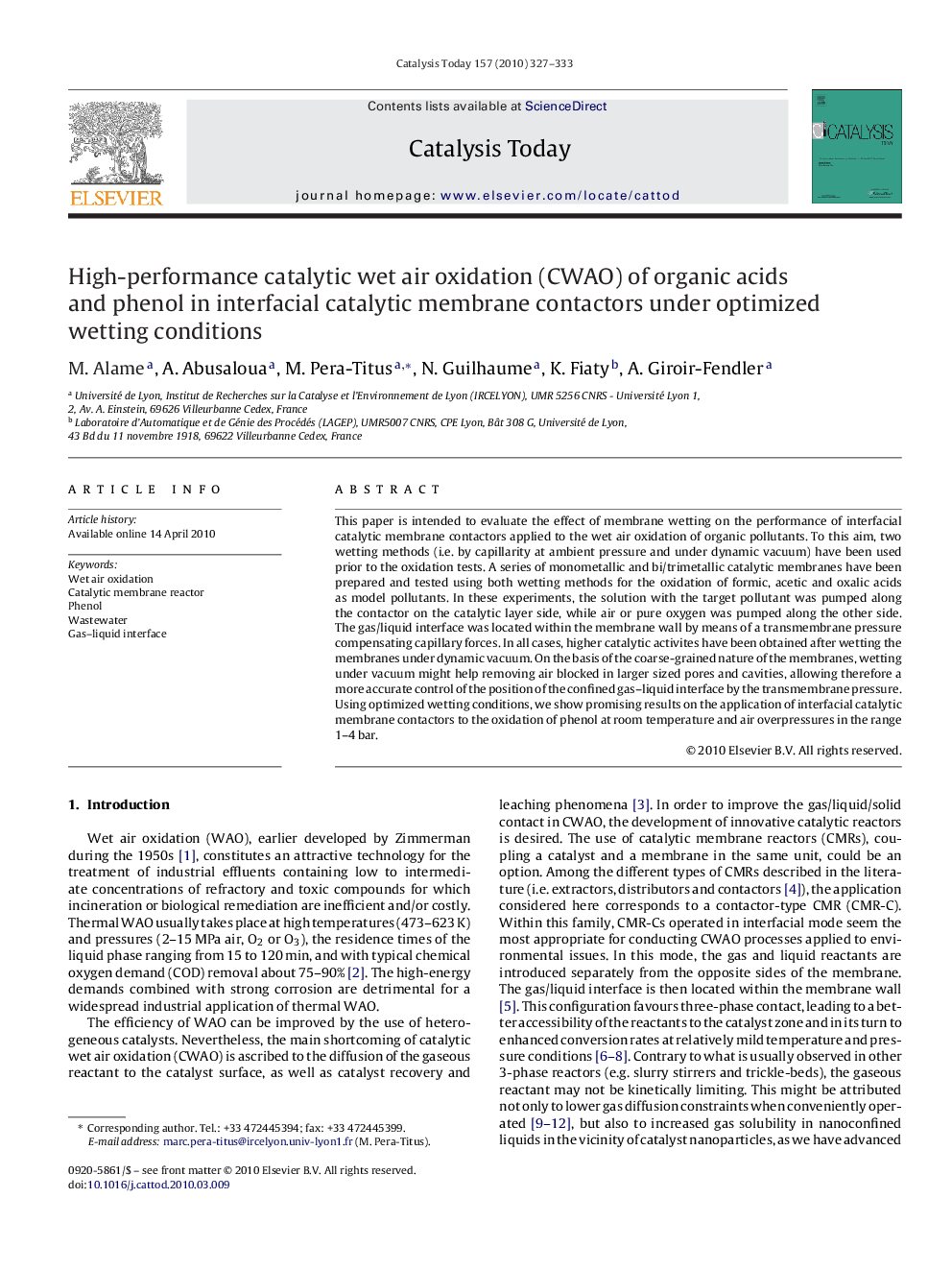| Article ID | Journal | Published Year | Pages | File Type |
|---|---|---|---|---|
| 56240 | Catalysis Today | 2010 | 7 Pages |
This paper is intended to evaluate the effect of membrane wetting on the performance of interfacial catalytic membrane contactors applied to the wet air oxidation of organic pollutants. To this aim, two wetting methods (i.e. by capillarity at ambient pressure and under dynamic vacuum) have been used prior to the oxidation tests. A series of monometallic and bi/trimetallic catalytic membranes have been prepared and tested using both wetting methods for the oxidation of formic, acetic and oxalic acids as model pollutants. In these experiments, the solution with the target pollutant was pumped along the contactor on the catalytic layer side, while air or pure oxygen was pumped along the other side. The gas/liquid interface was located within the membrane wall by means of a transmembrane pressure compensating capillary forces. In all cases, higher catalytic activites have been obtained after wetting the membranes under dynamic vacuum. On the basis of the coarse-grained nature of the membranes, wetting under vacuum might help removing air blocked in larger sized pores and cavities, allowing therefore a more accurate control of the position of the confined gas–liquid interface by the transmembrane pressure. Using optimized wetting conditions, we show promising results on the application of interfacial catalytic membrane contactors to the oxidation of phenol at room temperature and air overpressures in the range 1–4 bar.
